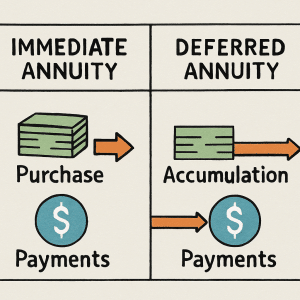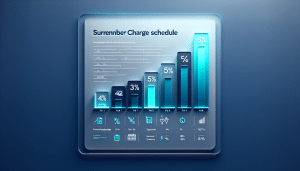American Banks Go Digital
The banking industry has undergone a significant transformation in recent years, thanks to the emergence of digital technology. American banks, in particular, have had to adapt to the changing landscape to remain competitive and relevant in the industry.
With the rise of mobile banking, online transactions, and other digital services, customers expect seamless and convenient banking experiences that are available at their fingertips. In response, American banks have invested heavily in digital technology and are constantly seeking new and innovative ways to improve their services.
From mobile apps to AI-powered chatbots, the banking industry is embracing the digital age and revolutionizing the way customers interact with their finances. In this article, we will explore how American banks are adapting to the digital age of banking and the impact this is having on the industry as a whole.
The Rise of Digital Banking
The rise of digital banking has been a game-changer for the banking industry. Digital banking has made it possible for customers to access their bank accounts, make transactions, and manage their finances from anywhere in the world, at any time of the day or night.
This has made banking more convenient and has given customers greater control over their finances. The shift to digital banking has been driven by a number of factors, including the increased use of mobile devices, the need for greater convenience, and the desire for a more personalized banking experience.
Factors Driving the Shift to Digital Banking
The shift to digital banking has been driven by several key factors. One of the main factors is the increasing use of mobile devices. With more and more people using smartphones and tablets, it has become easier than ever before to access banking services on the go.
This has made banking more convenient and has given customers greater control over their finances. Another factor driving the shift to digital banking is the need for greater convenience. Customers today are busier than ever before and want to be able to access their banking services quickly and easily.
Finally, the desire for a more personalized banking experience has also been a driving factor in the shift to digital banking. With digital banking, customers can access personalized financial advice and guidance, as well as customized banking services that cater to their individual needs.
How American Banks are Adapting to the Digital Age
American banks have been quick to adapt to the digital age of banking. They have invested heavily in digital technology and are constantly seeking new and innovative ways to improve their services.
One of the main ways that American banks are adapting to the digital age is by offering mobile banking apps. These apps allow customers to access their bank accounts, make transactions, and manage their finances from their mobile devices.
Banks are also using AI-powered chatbots to provide customer service and support. These chatbots can answer common questions, provide financial advice, and help customers manage their accounts.
The Benefits of Digital Banking for Consumers
Digital banking offers a range of benefits for consumers. One of the main benefits is convenience. With digital banking, customers can access their bank accounts, make transactions, and manage their finances from anywhere in the world, at any time of the day or night.
This makes banking more convenient and gives customers greater control over their finances. Another benefit of digital banking is personalization. Digital banking allows customers to access personalized financial advice and guidance, as well as customized banking services that cater to their individual needs.
Finally, digital banking is often more secure than traditional banking. Banks use advanced security measures to protect their customers’ data and prevent fraud.
The Challenges of Digital Banking for Banks
While digital banking offers many benefits for consumers, it also presents challenges for banks. One of the main challenges is security. Banks must ensure that their customers’ data is protected and that their systems are secure from cyberattacks and other security threats.
Another challenge is regulation. Banks must comply with a range of regulatory requirements, including data privacy laws, anti-money laundering regulations, and consumer protection laws. Finally, the shift to digital banking requires banks to invest heavily in digital technology, which can be expensive and time-consuming.
The Benefits of Digital Banking for Consumers
Digital banking is a rapidly evolving industry, and there are several trends to watch for in the future. One of the main trends is the use of blockchain technology. Blockchain technology has the potential to transform the banking industry by providing a secure, decentralized method of storing and transferring financial data.
Another trend to watch for is the use of biometric authentication. Biometric authentication, such as facial recognition and fingerprint scanning, can provide an added layer of security for digital banking. Finally, the use of machine learning and artificial intelligence is also a trend to watch for in the future. These technologies can help banks to provide more personalized and efficient banking services.
The Impact of COVID-19 on Digital Banking
The COVID-19 pandemic has had a significant impact on the banking industry, accelerating the shift to digital banking. With social distancing measures in place, more and more customers have turned to digital banking as a way to manage their finances.
This has led to an increase in the use of mobile banking apps, online transactions, and other digital services. Banks have had to adapt quickly to meet the increased demand for digital banking services, and many have invested heavily in digital technology to provide a seamless and convenient banking experience for their customers.
Examples of Successful Digital Banking Strategies
There are several examples of successful digital banking strategies that American banks have implemented. One example is the use of mobile banking apps.
Many banks have developed mobile banking apps that allow customers to access their bank accounts, make transactions, and manage their finances from their mobile devices. Another example is the use of AI-powered chatbots.
Chatbots can provide customer service and support, answer common questions, and help customers manage their accounts. Finally, the use of personalized financial advice and guidance is also a successful digital banking strategy. Banks can use customer data to provide customized financial advice and guidance that meets the individual needs of each customer.
Conclusion
The shift to digital banking has revolutionized the banking industry, and American banks have been quick to adapt to the changing landscape.
With the rise of mobile banking, online transactions, and other digital services, customers expect seamless and convenient banking experiences that are available at their fingertips. American banks have invested heavily in digital technology and are constantly seeking new and innovative ways to improve their services.
While digital banking presents challenges for banks, it also offers many benefits for consumers, including convenience, personalization, and security. As the banking industry continues to evolve, it will be interesting to see how American banks continue to adapt to the digital age of banking.
















